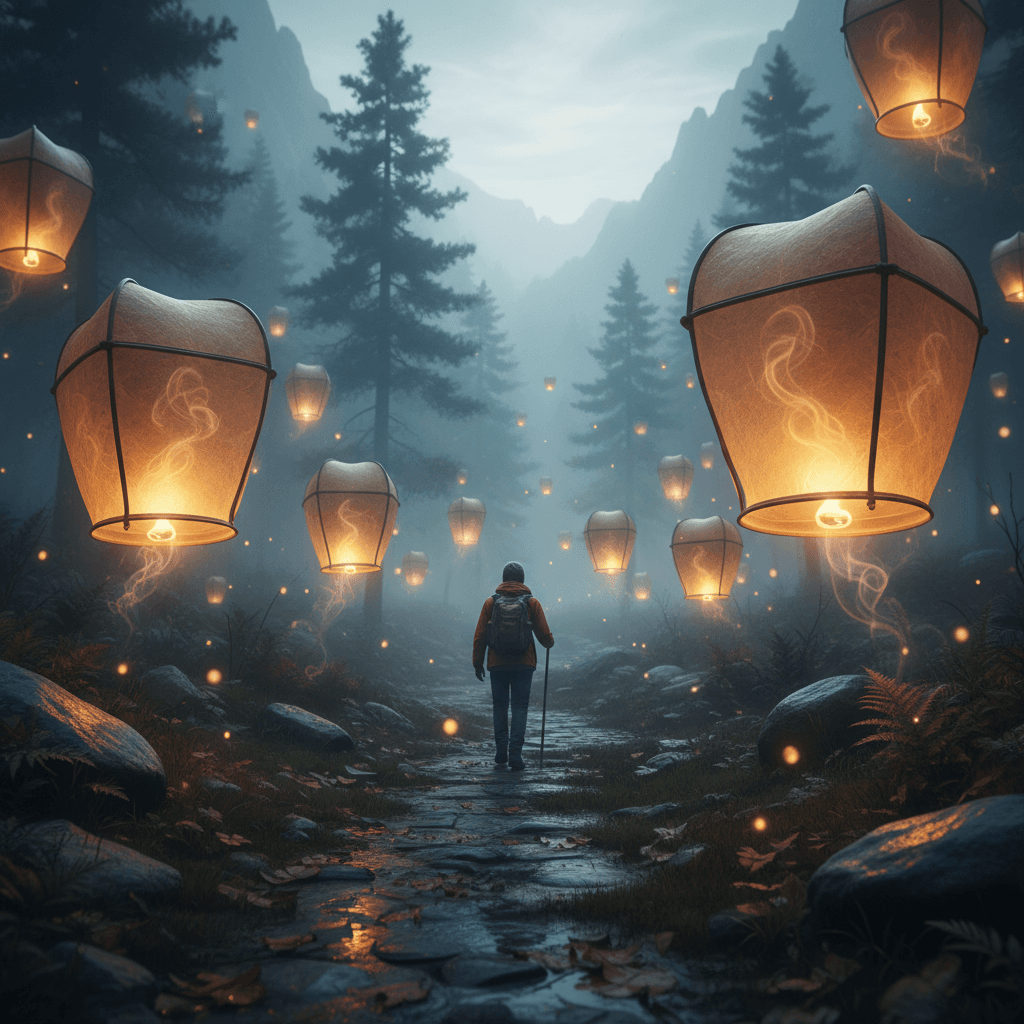Turning Doubts into Lanterns of Progress
Created at: October 11, 2025

Light your doubts into lanterns and carry them as proof you moved forward. — Maya Angelou
From Shadow to Signal
Angelou’s image invites a quiet transformation: doubt, often treated as a shadow to be banished, becomes a lamp we kindle. Rather than deny uncertainty, we convert it into visibility, revealing edges and paths we could not see before. Like kintsugi, the Japanese art of repairing cracks with gold, the act of lighting our doubts dignifies the fracture and makes guidance out of what once felt like a flaw. In this reframing, hesitation is not the end of movement but the instrument that allows movement to be wise. Having turned on the light, we can now ask what it means to carry such lamps.
Doubt as Evidence of Motion
Carrying a lantern implies that we are on the move; likewise, doubts borne consciously testify that we chose to traverse uncertainty rather than avoid it. Educational research on productive failure shows this pattern: students who struggle first and reflect often learn more deeply (Kapur, 2008; Kapur, 2016). Similarly, error management training improves performance because learners treat mistakes as data, not verdicts (Keith and Frese, 2008). Thus, a record of questions, missteps, and revisions becomes proof of forward motion. The lantern is not a badge of fragility; it is a travel log.
The Psychology of Reframing
Transforming doubt into light relies on cognitive reappraisal, the skill of reinterpreting a feeling’s meaning to change its impact (Gross, 1998; 2015). When anxiety is reframed as curiosity, physiological arousal can fuel exploration rather than avoidance. This dovetails with growth mindset research, which finds that viewing ability as improvable increases persistence and learning (Dweck, 2006). Moreover, self-efficacy—our belief that we can act effectively—rises when we see each uncertain step as a manageable experiment (Bandura, 1997). In this way, the mind refocuses the beam, turning vague unease into directional insight.
Wayfinding with Ancient Lights
History echoes this lanterned posture. Diogenes of Sinope famously walked with a lamp in daylight, searching for an honest person; the gesture implied that illumination is a tool for inquiry, not certainty. Likewise, the humility at the heart of Socrates in Plato’s Apology—knowing that he does not know—makes ignorance a compass rather than a cage. These images remind us that doubt, carried openly, becomes a method. They also bridge to our present lives: when we name uncertainties aloud, we create sightlines where there were none.
Practices to Light the Lantern
Begin with a doubt inventory: list worries as questions starting with how or what. Then, design tiny tests that answer one question at a time, borrowing from design thinking’s bias toward action. Use a premortem to imagine a future failure and identify preventable causes now (Klein, 2007). Keep a proof-of-progress log that captures attempts, results, and next moves—evidence that your lantern is indeed lit. For rumination, set a daily worry window, a CBT technique that contains anxiety to a scheduled time, preserving focus elsewhere. Each practice turns abstract unease into tractable light.
Carrying Doubts Together
Lanterns burn brighter in procession. Teams that practice psychological safety—where candor is welcomed—learn faster because questions surface earlier and errors are shared data (Edmondson, 1999; Edmondson, 2018). A simple ritual helps: start meetings with a round of uncertainties and a request for one experiment per doubt. Over time, this builds communal proof that the group moved forward, not by hiding ambiguity, but by illuminating it. In that shared glow, Angelou’s imperative becomes culture: we carry our doubts as witnesses to our journey.